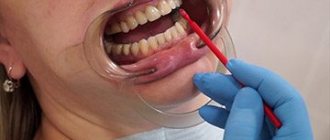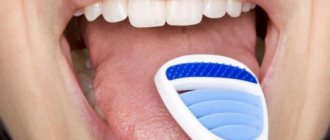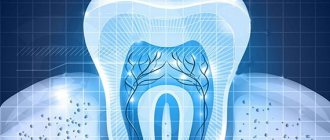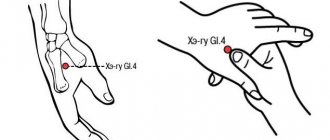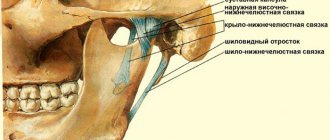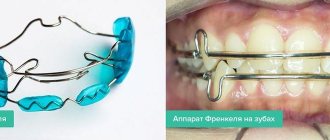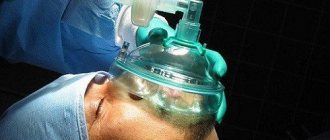Despite modern technology, a visit to the dentist for many people is still tantamount to climbing the scaffold or torture chamber. Meanwhile, even careful hygiene does not guarantee relief from possible problems, so the dental profession does not lose its relevance, and the global scientific community continues to find ways to combat oral diseases. Today, the tooth fairy is ready to offer a new and virtually painless method of treating diseases of the teeth and gums - plasma lifting. It is also gratifying that this fairy has Russian citizenship - the discovery belongs to domestic maxillofacial surgeons.
Plasmolifting in dentistry
Plasmolifting is an innovative method of treating gums, based on the injection of the patient’s own blood plasma (autoplasma) into the soft tissues for inflammatory and atrophic diseases of the oral cavity. The therapeutic effect is achieved due to the launch of regeneration processes in the body at a deep, cellular level - plasma components serve as the “building blocks” that build new tissues.
Plasma is a yellowish liquid consisting of 90% water with biologically active substances dissolved in it - proteins, amino and fatty acids, enzymes, hormones, vitamins
Autoplasma is obtained by centrifugation and is additionally enriched with platelets, which play a critical role in the restoration and healing of damaged tissues, promoting cell growth and reproduction. Therefore, today plasma lifting is successfully used in dentistry to solve periodontal problems and shorten the rehabilitation period after surgical interventions.
Advantages of plasma lifting
Despite the fact that plasma lifting has been used in dentistry relatively recently, the method has already proven itself on the positive side:
- The procedure is safe - the risk of infection, rejection and allergic reactions is excluded, because the treatment process involves the use of one’s own plasma without the use of chemically synthesized anti-inflammatory, immunomodulatory and antibacterial drugs.
- If necessary, plasma lifting can be used as part of complex therapy and combined with medications and other treatment methods (including surgery).
- The intervention is minimally invasive and causes minimal pain.
- The procedure does not require significant time investment.
- Plasmolifting is distinguished by the simplicity of the preparatory and rehabilitation period.
- Covers a wide range of indications.
Disadvantages of plasma lifting
This treatment method also has another side to the coin:
- The full course requires financial investment.
- Plasmolifting is not suitable for every patient due to existing contraindications.
- Possible side effects.
- Sometimes the procedure can only serve as an addition to the main treatment measures.
- Plasma injections are not performed in all clinics due to the skepticism of some specialists towards this treatment method.
- Not every dental office has equipment for plasma lifting.
- Not every specialist has the skills necessary to perform the procedure.
Safety of plasma lifting
The plasmolifting procedure is a technique that is absolutely safe for human health, since it uses natural material obtained from the patient’s own blood. This completely eliminates the risks of allergic reactions and rejection. Plasma is injected locally, exclusively into problem areas of the gums and oral cavity, which allows not only effective treatment of various dental diseases, but also accelerates the processes of regeneration of gum tissue and bone tissue after surgical interventions - implantation, tooth extraction.
The introduction of plasma into soft tissues, the sinus lift area, the socket of an extracted tooth, in the place of the implanted membrane allows you to catalyze the process of capillary sprouting, normalize the processes of oxygen supply to the tissues and restore healthy metabolism in them. The action of substances from the injected plasma has a beneficial effect on the strengthening and restoration of bone tissue, and the restoration of local immunity.
Efficiency of the procedure
Plasmolifting activates the body's hidden reserves and helps it successfully cope with many problems. Resulting in:
- new capillaries are formed - blood microcirculation in tissues and their nutrition improves;
- cellular respiration is normalized;
- metabolic processes are activated;
- the vascular wall is strengthened, hyperemia (redness), swelling and bleeding of the gums are eliminated;
- bone tissue becomes denser - tooth mobility decreases;
- pain, itching and bad breath disappear;
- regeneration processes improve - wounds heal faster;
- the risk of displacement and rejection of installed implants is reduced;
- local immunity is strengthened - tissue resistance (stability) to bacteria and waste products increases.
The duration of the effect depends on the severity of the disease - in mild forms of gingivitis, one course may be sufficient; advanced pathologies of periodontal tissue require a course of injections every three months; An important factor is the quality of the equipment used to obtain plasma, as well as the qualifications of the doctor who determines the dosage of the drug.
The greatest restorative effect is achieved with optimal saturation of plasma with platelets, and this depends on the technical characteristics of the equipment
Important! Plasmolifting should not be overestimated - in case of serious pathologies, additional treatment methods must be used. For example, victory over advanced forms of periodontitis is unthinkable without removing dental plaque, curettage (scraping and grinding) of periodontal pockets, and in some cases, flap operations. When preparing for implantation and serious bone tissue deficiency, plasma lifting alone is also not enough, but the procedure will significantly speed up the rehabilitation process after osteoplasty.
All this allows, if not a complete cure, then to achieve a stable remission of the disease. Positive changes in the body begin immediately after the injection of autoplasma, and a noticeable improvement is observed within two weeks after the procedure - the symptoms go away first, the inflammation goes away, and then the regenerative processes in the depths of the cells are normalized.
Preparation for the procedure
The gum plasmolifting procedure does not require special preparation, however, patients are strongly advised to adjust their lifestyle, because the only therapeutic factor is their own blood, the quality of which directly determines the therapeutic effect:
- At the preliminary consultation, the dentist talks about the essence of plasma lifting.
- After examining the oral cavity, studying a panoramic photograph of the jaws, the patient’s medical history, concomitant diseases, the results of blood tests (clinical, biochemical, for hidden infections) and in the absence of contraindications, the doctor will prescribe a day for the procedure.
- Plasma injections are best done after professional hygiene measures (removal of supragingival and subgingival dental plaque).
- A few days before the procedure, the patient needs to stop drinking alcohol and smoking.
- Changes should also be made to the diet, excluding spicy, salty, smoked, fried, and fatty foods.
- The amount of water consumed should be increased to 2 liters per day, and it is better to avoid coffee and strong tea.
- Before the intervention, it is prohibited to take blood thinning medications (anticoagulants and aspirin-containing drugs).
- Plasmolifting is recommended to be done in the morning or during the day, limiting food intake several hours before the appointment.
Features of plasmolifting of gums
The procedure begins with preparation. Step by step it looks something like this:
- First, the patient should reduce the consumption of fatty and fried foods. Typically, the diet should be reviewed three days before plasmolifting of the gums.
- About a week before the procedure and for some time after it, you will have to give up alcoholic beverages.
- Immediately on the day of plasma lifting, blood is taken from the patient and placed in a special device, which uses a centrifuge to separate the plasma from the blood cells.
- An injection of local anesthesia is given at the periodontal site, after which the introduction of the yellow substance is completely imperceptible.
Progress of the procedure
The plasma lifting procedure takes from 20 to 30 minutes and proceeds as follows:
- About 15 ml of blood is taken from the patient's vein.
- The tube with plasma is placed in a centrifuge - the process of isolating autoplasma saturated with platelets takes about 10 minutes.
Freshly collected patient blood is placed in sterile tubes installed inside a centrifuge - as a result of rotation at high speed, plasma, saturated with biologically active substances, begins to separate from other blood components - Before autoplasma injections, local anesthesia can be given at the patient’s request.
- When the liquid biomaterial is ready, it is drawn into a syringe with a thin needle and precisely injected into the affected areas - this could be the area where the implant will be installed, the socket of an extracted tooth, or inflamed gums.
Injections of autoplasma are made from the vestibular and lingual (lingual) side into the gingival papillae, marginal gingiva (fixed mucous membrane covering the alveolar processes) and into the transitional fold (movable zone of transition of the mucous membrane from the gums to the lips) - After this, the forces of the body itself are activated - restoration processes are launched in the tissues.
How is the procedure performed?
The technique of extracting blood plasma and administering injections is simple, but it is performed only by qualified doctors with extensive experience. In addition, licensed equipment is required to carry out such procedures.
Preparation for plasma lifting includes:
- clinical blood test to exclude contraindications - 1–2 days before the injection of autoplasma;
- taking venous blood immediately before the procedure.
After taking the biological material, the test tube is placed in a special centrifuge, which separates the blood into several fractions. The duration of obtaining plasma takes about 15–30 minutes, depending on the rate at which platelets settle. Next, the biomaterial is injected into the gums.
Important! Autoplasma is stored for no more than four hours. Freezing and reuse of biomaterial is strictly prohibited. That is why blood is taken immediately before the procedure and injected immediately after receiving the biomaterial.
Rehabilitation period
Since the plasma lifting procedure is often combined with other treatment methods, the duration of the recovery period directly depends on the volume of intervention. At this time, the patient is required to:
- maintaining oral hygiene (it is also possible to use decoctions of medicinal herbs);
- maintaining a healthy lifestyle and giving up bad habits;
- limiting physical activity for a while.
If plasma lifting was used as an addition to the main manipulations (tooth extraction or implant installation), then the list of restrictions may expand:
- At first, you need to give up solid, hot, spicy foods.
- Any thermal procedures should be avoided.
- Do not injure damaged areas (with tongue, brush).
- It is forbidden to rinse your mouth; it is better to limit yourself to antiseptic baths.
If you follow all these recommendations, the recovery period will pass quickly and without problems.
Contraindications
The plasma lifting procedure is prohibited under the following conditions and pathologies:
- individual intolerance to heparin;
- hepatitis;
- disturbances in the functioning of the organs of the endocrine and excretory systems;
- inflammatory, infectious, viral and fungal diseases;
- oncological processes;
- exacerbation of chronic diseases of internal organs;
- reduced immunity (including HIV, AIDS, autoimmune pathologies);
- problems with blood clotting (hemophilia, thrombophilia) and other blood diseases;
- pregnancy and lactation;
- elevated temperature;
- intoxication of the body;
- metabolic disorders;
- psychical deviations.
Plasmolifting is based on stimulating the proliferation of stem cells - immature cells, which, subsequently differentiating, form different tissues of the body. In the event of an immune failure, stem cells can provoke the development of oncopathologies, so patients with a genetic predisposition to such diseases should refuse autoplasma injections.
Neglecting the listed restrictions can cause aggravation of existing diseases and the occurrence of side effects, therefore, before the plasma lifting procedure, it is necessary to undergo a medical examination (urine and blood tests) and consult with your doctor, and, if necessary, with specialized specialists. If the procedure is prohibited, you will have to turn to alternative methods of treating oral diseases, which will be suggested by a dentist or periodontist.
#5 effects from the procedure
So what can you achieve by injecting your own plasma into the gum area? The main effects of the procedure are:
- Restoration of the physiological structure of the gums.
- Normalization of blood circulation in the affected area.
- Stimulation of cell metabolism.
- Launching gum regeneration processes.
- Disappearance of redness, appearance of natural coloring of soft tissues.
Against the background of plasmolifting of the gums, the condition of not only the gum tissue, but also the bone structures adjacent to them improves.
It has been proven that thanks to regular procedures, collagen proteins are actively synthesized in the affected area, which are involved in fixing the tooth in its physiological position.
Sufficient matrix formation eliminates the manifestations of periodontitis and prevents bone destruction.
An additional positive effect of plasma lifting procedures in dentistry is the stimulation of the local immunity of the gums. Improving the protective function is a good prevention of infections, including gingivitis and periodontitis.
By the way, plasma lifting is also used in the field of cosmetology and joint treatment. It helps rejuvenate and improve hair health.
Possible side effects
As a rule, gum plasma lifting occurs without any complications. The following precedents are isolated:
- It is possible to be allergic to the anticoagulants used to treat the tubes and the material from which the needles are made.
- Infection and, as a result, suppuration at the injection sites or blood poisoning.
- Exacerbation of latent infections (viral, fungal, bacterial).
- Swelling, hyperemia, hematomas at the injection sites, which disappear after a few days.
- Fibrosis (gum overgrowth).
Serious complications are caused by low qualifications of medical personnel, violation of sanitary and hygienic standards and neglect of contraindications. These problems can be easily avoided if you adhere to the following recommendations:
- You should contact a clinic that has a license to carry out medical activities.
- Specialists must have the necessary qualifications and permission to work with blood and carry out plasma transfer.
- The doctor should be warned about all concomitant diseases and allergies.
- Test tubes, syringes, equipment, and the office must comply with sanitary and hygienic standards - absolute sterility is necessary for successful treatment.
Where to perform plasmolifting of gums
Although the procedure is considered a unique technique, it is used today by most dental clinics. When the question arises, where can plasma lifting of gums be done in Moscow, you should evaluate different parameters and level of service:
- The location of the clinic is decisive for many patients.
- Personnel qualifications.
- Cost of the procedure. The price range is quite wide - from 1,500 to 10,000 rubles per procedure. Services in the same clinic will cost less, since in this case discounts are usually provided.
Dentistry “Doctor With You” is a staff of highly qualified specialists who are constantly improving their level of professionalism. Extensive work experience is a guarantee of the most effective and painless solution to a problem of any complexity.
Doctors' promises, as a rule, do not guarantee the effectiveness and painlessness of the procedure, so reviews of gum plasma lifting will be useful for those who still doubt the advisability of its use.
Reviews
Plasmolifting is safe. This is the introduction of your own plasma into the gums. It stimulates the growth of collagen in gum tissue, improves the nutrition of all its layers. To understand whether it has an effect, you need to do 5-6 procedures.
Olesya Vladimirovna, dentist
https://forum.stomatologija.su/t13-parodontoz-lechenie-parodontoza/
Plasmolifting is generally not harmful, and in combination with other manipulations it is even useful. Doing plasma lifting alone is a little pointless.
faity, dentist
https://forum.stom.ru/topic/27178-plazmolifting/
My teeth are small and my gums still hang over them. So, in order to visually enlarge the tooth, the overhanging part of the gums had to be trimmed. After this correction, my gums were injected with the same plasma, after which I did not have any pain, even after the anesthesia wore off. There was practically no bleeding. The first day my gums looked a little swollen, but the next day everything was perfect. Therefore, I give this procedure 5 stars and thank you very much, of course, to the dentist for advising me to do it. I am very pleased and recommend it to everyone!!!
Stefanok, patient
https://irecommend.ru/content/ne-pozhalela-chto-sdelala-zachem-eto-nuzhno-dlya-vinirov
Plasmolifting on the gums: the tooth was shaking due to an infection at the root, plasmolifting was done by dentists. The price is much higher than that of cosmetologists. There was no good result, the tooth had to be removed.
Fau, patient
https://irecommend.ru/content/plazmolifting-kozhi-litsa-desen-opyt-neskolkikh-let
If we take the most common periodontal diseases - gingivitis and periodontitis, they are caused primarily by a biofilm of microorganisms, as well as associated aggravating factors: overhanging edges of restorations, pathology of the dentition (crowding, rotating teeth, etc.), smoking, etc. Plasmolifting does not affect any of these etiological factors. It also cannot eliminate periodontal pockets formed during periodontitis, even theoretically. Thus, the only potential effect of platelet-rich plasma is to stimulate the body's defense response to bacterial attack. Hirudotherapy is aimed at the same thing. Both methods can provide a temporary reduction in symptoms, but they can only be used as auxiliary ones. The main methods of treating gingivitis, periodontitis and gum recession are completely different.
Destination, dentist
https://forum.rusmedserv.com/index.php/t-416031.html
Video: opinion of a practicing dentist about plasma lifting
Plasmolifting in dentistry is still gaining momentum, but has already proven its worth in the treatment of many diseases of the oral cavity of an inflammatory and atrophic nature. Autoplasma injections cannot be considered a panacea, but as part of complex therapy they can provide the body with significant assistance in recovery, awakening its hidden reserves.
- Author: Ekaterina Rogova
I am a certified tourism specialist, an inquisitive and creative person. I like to work with information and expand my horizons, so I’m currently learning a new profession as a copywriter. I draw inspiration from travel, classical literature, art, music and the beauty of nature. Rate this article:
- 5
- 4
- 3
- 2
- 1
(1 vote, average: 5 out of 5)
Share with your friends!
Indications for the procedure
Plasmolifting of the gums is recommended in the presence of inflammatory and atrophic processes in the oral cavity.
INDICATIONS
- Gingivitis – inflammation of the gums;
- Alveolitis is a pathological process in the socket that occurs after tooth extraction;
- Peri-implantitis – inflammation of the tissue around the implanted implant;
- Generalized periodontitis is a lesion of the entire complex of tissues surrounding the tooth.
An indication for plasma lifting procedures is also the period of preparation for various dental operations. This could be surgical interventions related to tooth extraction, implant installation, or sinus lift.
The administration of plasma has a beneficial effect on the condition of the gums, preventing possible postoperative complications.
If desired, the patient can undergo plasma lifting for preventive purposes.
The procedure significantly reduces the risk of developing infectious processes in the oral cavity. Its regular implementation ensures a healthy appearance of the teeth, which is why many people take plasma injections for cosmetic purposes.
